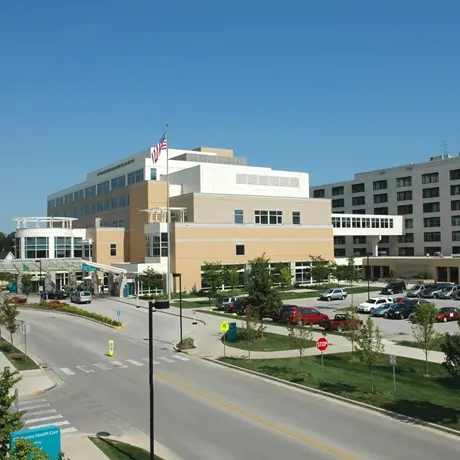How Aurora West Allis Medical Center avoided unnecessary staff radiation dose
Minimally invasive image-guided diagnosis and treatment of disease has revolutionized healthcare and continues to grow rapidly. For good reason, as interventional X-ray and related techniques have brought about safer and more effective treatments for a number of diseases, compared to what was available just a few decades ago.
At the same time, interventional X-ray techniques often require several people from the medical staff to be present in the room while patients are being irradiated. As a certain portion of the radiation will scatter into the room, radiation protection measures have been designed to help the medical staff stay safe, such as protective garments and lead glass screens.
However, it’s important to remember that radiation safety can be improved even further through the way one behaves around radiation and by ensuring optimal positioning of passive shielding devices. Real-time Staff Dosimetry (RTSD) is an indispensable tool to facilitate this, thanks to its immediate feedback on personal radiation exposure.
How Aurora West Allis Medical Center reduced staff radiation exposure with RTSD
A recent study on the use of RTSD monitoring during vertebral augmentation at Aurora West Allis Medical Center by Dr. Peter Drescher, Davina Winandy and Tracey Marshall revealed a significant reduction in staff radiation dose.
RTSD measured real-time radiation exposure for the attending physician, scrub technologist, circulating technologist and anesthesiologist. The X-ray system measured and provided information about the fluoroscopic time and dose area product while the RTSD system provided dose and dose rate readings for the staff during the procedure. RTSD collected data during standard procedures (n=10) and monitored the radiation-reducing measures added in a radiation reduced procedure group (n=55).
The steps that were taken to reduce radiation exposure included:
- raising staff awareness through the use of RTSD
- using low-pulse fluoroscopy (3f/s)
- directing the angulation of the image intensifier towards the physician
- installing a protective glass lead shield for the physician and the anesthesiologist
- purposefully increasing the distance to the patient
- placing a radiation-absorbing shield on the patient
- storing the last image instead of exposure, to reduce additional radiation
This reduced the physician’s radiation exposure from 9.1 to 5.4 mR, the scrub technologist´s from 1.4 to .6 mR, the circulating technologist’s from 1.6 to .5 mR and the anesthesiologist’s from 3.4 to 1.1. mR. After this study, under the guidance of Dr. Drescher, new processes and procedures were implemented to increase radiation awareness, the stringent use of radiation protective devices and led to the complete revision of the entire workflow.[1]
So, the study by Aurora West Allis Medical Center shows us that radiation exposure of the staff can be reduced in a simple way. It though requires changes to education, tradition and current thinking. Changes that are invaluable to the long-term health of the medical staff and patients and beneficial to the overall health of the institution.
[1] Drescher et al., “Real-time radiation dosimetry during vertebral augmentation - Initial experience, education and radiation reduction,” Abstract CIRSE 2017.
